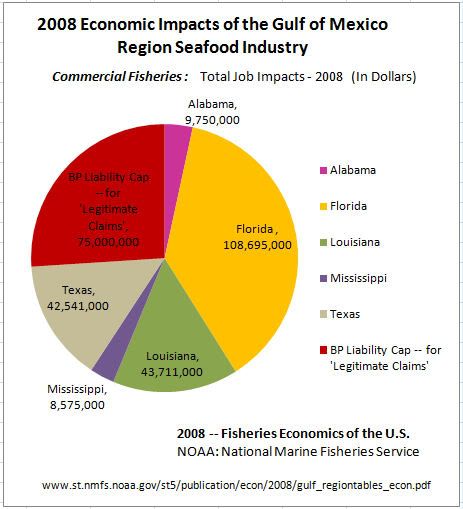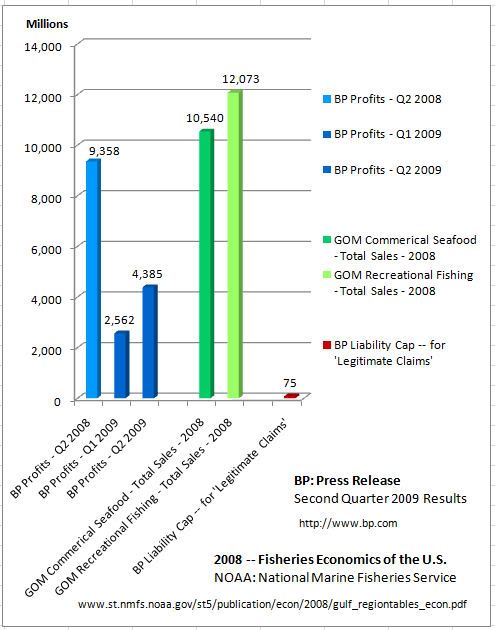(10:30AM EST – promoted by Nightprowlkitty)
I, for one, hope that this is true, and will be further substantiated:
Study: Petroleum-eating microbes significantly reduced gulf oil plume
David Brown, Washington Post Staff Writer — Tue, August 24, 2010
Petroleum-eating bacteria – which had dined for eons on oil seeping naturally through the seafloor – proliferated in the cloud of oil that drifted underwater for months after the April 20 accident. They not only outcompeted fellow microbes, they each ramped up their own internal metabolic machinery to digest the oil as efficiently as possible.
The result was a nature-made cleanup crew capable of reducing that reduced the amount of oil amounts in the undersea “plume” by half about every three days, according to research published online Tuesday by the journal Science.
The findings, by a team of scientists led by Terry C. Hazen of the Lawrence Berkeley National Laboratory in California […]
[… Continuing with today’s breaking news ]
The findings point to a different conclusion from that drawn by readers of a study published last week, also in the journal Science. That research by scientists at Woods Hole Oceanographic Institute found no reduction in the oxygen content of the gigantic oil plume, suggesting that microbes were consuming the oil very slowly.
But, but wasn’t there a Science Study just last week questioning whether the Oil-eating Microbes were even working, in the deep water Plumes?
There was.
Yet members of both though conflicting studies, are now saying that the studies really don’t contradict each other, because of different focuses and methodologies used. As I recall the Wood Holes study was inferring the “lack of Microbes activity” due to the unexpected “abundance of Oxygen” they found in the Deep Plumes.
This article tries to reconcile the different findings:
Oil’s well that ends well: report suggests microbes have gobbled up Gulf spill
By Margaret Munro, Postmedia News, montrealgazette.com — August 24, 2010
[…] The two reports – both published online by the journal Science – have plenty of people shaking their heads.
But the scientists insist both reports are correct, and have been working the phones to try to quell the confusion caused by their conflicting studies, statements and speculation.
“We don’t see that there’s a contradiction,” says marine ecologist Terry Hazen, leader of the team at the DOE’s Lawrence Berkeley National Laboratory.
“Our findings are consistent,” says Richard Camilli, who leads the Woods Hole team and is also trying to downplay the contradictions in the fast-evolving story of what has become of all the spilled oil.
The question still remains to be answered, How Toxic is the Dispersant Corexit to the Oil-consuming Microbes?
Especially since the activity ingredient in the “early stronger” version of Corexit, 9527 has as one of its states uses:
2-Butoxyethanol
Use Type: Adjuvant, Fungicide, Microbiocide, Solvent
http://www.pesticideinfo.org/D…
Nice stuff — NOT!
The “latter weak” version of Corexit, 9500, does not have this Lipid-damaging ingredient, as far as I can tell.
Another question still remains to be answered, How Much of the “early stronger” version of Corexit, 9527 was actually used?
and where?
Well if you “read between the lines” of EPA Director, Lisa Jackson’s statements (in this next quote)
it sounds like
400,000 / 2 gallons of Corexit 9527 was used, or a “mere” 200,000 gallons.
BP: Dispersing Oil or Criticism?
Toxic chemicals helped the oil giant save face, but their health and environmental impacts are unknown
By Terry J. Allen –August 13, 2010
BP has used two dispersant formulations in the gulf-Corexit 9500 and 9527. The older formula, Corexit 9527-which contains 2-butoxy ethanol, a compound associated with headaches, vomiting and reproductive problems at high doses-is more toxic.
BP used “limited” quantities of the more dangerous formula to fill the gap until his company could ramp up production of the “improved” formula, Nalco spokesman Charlie Pajor told In These Times. But Pajor refused to quantify the amount applied.
In mid-May, Environmental Protection Agency head Lisa Jackson said she didn’t know for sure how much of each formulation was deployed, but she understood that use had been “roughly 50/50.” At that point, BP had applied at least 400,000 gallons of Corexit.
[…]The EPA was reluctant to challenge BP. “If you’re going to tie our hands, then we don’t own this spill,” BP Vice President David Rainey warned.
In a corner, Jackson told BP to “establish an overall goal of reducing dispersant application by 75 percent from the maximum daily amount.” That wording allowed BP to use the day of highest dispersal-70,000 gallons-as the benchmark. Jackson was then able to accurately (but misleadingly) claim that BP had reduced dispersant use by 68 percent. In fact, the average daily use had only gone down slightly, from 24,700 gallons before the directive to 22,600 after it.
Another question still remains to be answered, In what ways are we going to guarantee that “BP continues to own this spill?”
Afterall even if the Oil is rapidly degrading, the local damage from disaster is just beginning to be tallied. Damage on so many fronts, ecological, economic, quality of life, local health problems, endangered species loss, … etc. etc.
If we look at just the damages to the traditional Fishery industries alone, $20 Billion is no where close to covering it.

What ‘Legitimate Claims’ look like — It’s time to Raise the 75M Cap
by jamess — May 24, 2010
Afterall it’s NOT like BP, CAN’T Afford it:

Instead of wasting a Billion on an Image-make-over Ad Campaign … Why can’t we “compel” BP to fund the ramp-up of FDA Labs, to “ensure the safety of the Seafood”, that their recklessness, has put into serious Jeopardy, and doubt.
THAT would be a REAL step to taking a hold of that “Ownership of the Problem” for BP.
For Starters!
And that is another Question, that we should be asking;
In my opinion, of course.
… while we are patiently waiting for the follow-up Scientific Studies to trickle in, and be reconciled.
And I, for one, hope against hope, that today’s Good News is for Real, and will be further substantiated, by additional studies, like Lawrence Berkeley’s Study — which ACTUALLY counted the Microbe Population abundance in the water columns.
What a novel Idea — actually counting. Who Knew!

8 comments
Skip to comment form
Author
what we could accomplish —
if we actually focused on Science.
About those BP-funded microbes eating the oil
jamess has a rec’d diary over at Kos reporting on two Science articles, one of which reports a new strain of microbe that is rapidly digesting the oil. While Science is obviously one of the best peer-reviewed journals around, George Washington notes two significant potential conflicts of interest in that research.
read George Washington’s post here.
I’d add this to jamess’s diary in comments, if I weren’t banned, so hopefully james may see this and consider adding this important caveat.
thank you again, jamess.
Here’s some info. on the strongest Corexit:
(click on logo to read more)
There is something very strange about this so-called news. The Gulf waters were contaminated with methane, dispersants and oil, the vapors of which destroyed the oxygen in the waters (columns, etc.), which is what caused the thousands of deaths to the “sea life.” Either you or someone else posted an article showing hundreds and thousands of small fish that washed up on some upper (Maine?) coast dead, probably, feeder fish for certain species of sea life.
Oil-eating microbes require a ton of oxygen in order to thrive, so it’s pretty confusing to me how, knowing that, these microbes could be doing such a great job with the oxygen level so low or nil in much of the waters.
Then, there’s more curious stuff:
I think we need to refer back to the scientists that BP lured into employment (bought off), so we can be sure it’s not one of those that is supplying the information. Here’s a link for that information BP Paying Off Universities And Gulf Scientists In Mass To Hide Oil Spill Research Data From The Public
We need to find more scientific information about all of this, I think. We need to be skeptical of anything pertaining to BP. They have been spending tons of money on PR these days.